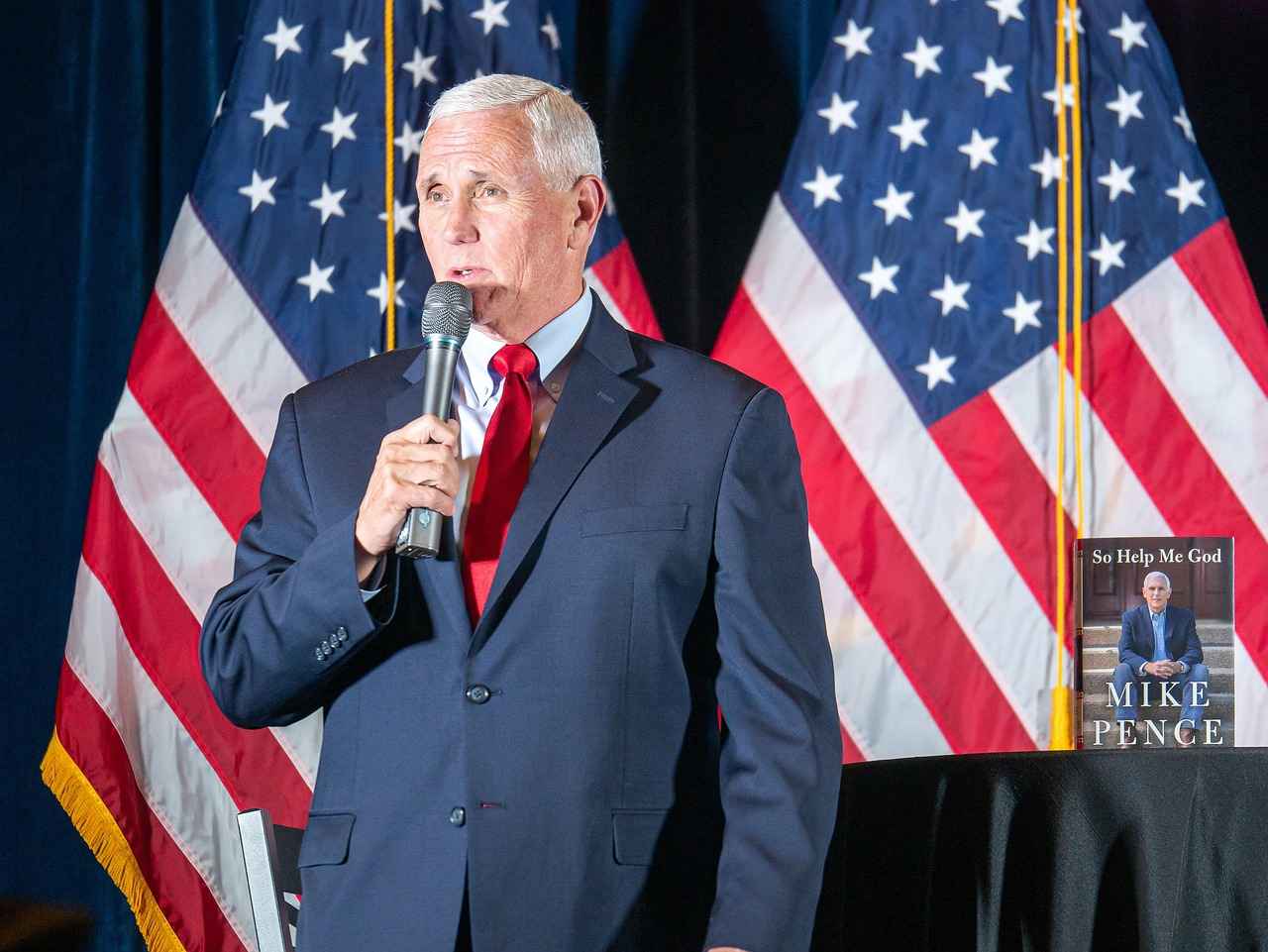This article delves into the recent West Bengal Panchayat election results, exploring key insights, trends, and implications for local governance and political dynamics in the region. The Panchayat elections are not only a cornerstone of democracy at the grassroots level but also a reflection of the evolving political sentiments among the electorate.
Overview of the West Bengal Panchayat Elections
The Panchayat elections in West Bengal are vital for ensuring local governance and empowering communities. These elections enable citizens to participate directly in the decision-making processes that affect their daily lives. The structure includes three tiers: the Gram Panchayat at the village level, the Panchayat Samiti at the block level, and the Zilla Parishad at the district level.
Election Timeline and Process
The electoral process for the Panchayat elections is well-defined, involving multiple phases from candidate nominations to the final results. Understanding this timeline is crucial for analyzing the political landscape.
- Pre-Election Preparations: Political parties engage in extensive preparations, including candidate nominations and campaign strategies.
- Election Day: Voter participation is a key indicator of democratic engagement, and various factors influence turnout.
Results Overview: Key Outcomes
The recent election results have unveiled significant trends in voter sentiment across West Bengal. The performance of different political parties has highlighted shifting alliances and emerging local issues.
| Political Party | Seats Won | Percentage of Votes |
|---|---|---|
| Trinamool Congress | XX | YY% |
| BJP | XX | YY% |
| Left Front | XX | YY% |
Implications for Local Governance
The outcomes of these elections will significantly impact policy-making and administration at the grassroots level. The new local governance structure faces both challenges and opportunities in addressing community needs.
Conclusion: The Way Forward
In conclusion, the West Bengal Panchayat election results are indicative of the changing political landscape. They not only reflect the aspirations of the electorate but also set the stage for future governance strategies in the state.

Overview of the West Bengal Panchayat Elections
The Panchayat elections in West Bengal serve as a fundamental pillar of local governance, fostering active participation from the grassroots level. These elections are not merely a procedural formality; they represent a vital mechanism for citizens to engage with their local government, ensuring that their voices are heard and their needs are addressed. In this section, we will explore the significance and structure of these elections within the broader context of West Bengal’s political landscape.
The Panchayat system is structured into three tiers: the Gram Panchayat (village level), the Panchayat Samiti (block level), and the Zilla Parishad (district level). Each tier plays a crucial role in local administration, with elected representatives responsible for implementing government schemes, managing local resources, and addressing community issues. This decentralized governance model empowers local populations, allowing them to influence decisions that directly affect their lives.
The importance of these elections extends beyond mere representation. They are a reflection of the democratic ethos of the state, encouraging political awareness and participation among citizens. The Panchayat elections also serve as a barometer for the political climate in West Bengal, often indicating the popularity of various political parties and their policies at the grassroots level.
- Grassroots Empowerment: The elections provide an opportunity for underrepresented groups, including women and marginalized communities, to gain political power.
- Local Development: Elected representatives are tasked with addressing local issues, leading to targeted development initiatives.
- Political Accountability: Regular elections foster accountability among local leaders, ensuring they remain responsive to their constituents.
In summary, the Panchayat elections in West Bengal are a critical component of the state’s governance framework. They not only facilitate grassroots participation but also play a significant role in shaping the political landscape, making them an essential subject of study for anyone interested in understanding local governance in India.

Election Timeline and Process
Understanding the timeline and electoral process is essential for grasping the dynamics of the Panchayat elections in West Bengal. The electoral journey is structured into several distinct phases, each playing a crucial role in determining the outcome of the elections. Below, we explore these phases in detail:
- Announcement of Elections: The journey begins with the official announcement of the elections by the State Election Commission. This announcement sets the stage for all subsequent activities.
- Pre-Election Preparations: Following the announcement, political parties engage in extensive preparations. This includes candidate selection, nomination processes, and strategizing campaign messages to resonate with voters.
- Candidate Nominations: Candidates must file their nominations within a specified period. This process involves submitting necessary documents and fees, ensuring compliance with the regulations set forth by the election authorities.
- Campaigning: Once candidates are confirmed, the campaign phase begins. Candidates and their parties engage in various activities, including rallies, door-to-door canvassing, and digital marketing, to garner support from the electorate.
- Election Day: This is the day when voters cast their ballots. It is crucial for ensuring high voter turnout, which reflects the democratic engagement of the community.
- Counting of Votes: After the polls close, the counting process begins. This phase is critical as it determines the winners of the elections.
- Results Declaration: Finally, the results are officially declared, marking the conclusion of the electoral process and the beginning of a new governance cycle.
The entire process is designed to uphold the principles of democracy, ensuring that every eligible citizen has the opportunity to participate in local governance. Understanding these phases not only sheds light on the electoral mechanics but also emphasizes the importance of each step in shaping the political landscape of West Bengal.
Pre-Election Preparations
play a crucial role in shaping the outcome of any election. In West Bengal, the lead-up to the Panchayat elections is marked by a series of organized activities that political parties and candidates undertake to secure their positions. This section delves into the essential steps involved in these preparations, highlighting their significance in the electoral process.
One of the first steps in the pre-election phase is candidate nominations. Political parties meticulously select candidates based on various criteria, including their popularity, experience, and ability to connect with the electorate. Each party conducts internal assessments to ensure that the chosen candidates align with the party’s goals and the needs of the community. This process often involves extensive discussions and consultations among party members.
Following nominations, campaigning becomes the focal point of pre-election activities. Candidates and their teams devise comprehensive strategies to engage voters. This includes door-to-door canvassing, organizing rallies, and utilizing social media platforms to reach a broader audience. The aim is to convey their messages effectively and address the concerns of the constituents. Campaign strategies are tailored to resonate with local issues, ensuring that the candidates appear relatable and trustworthy.
Moreover, community outreach is a vital component of pre-election preparations. Candidates often participate in local events, forums, and discussions to establish a presence within the community. This engagement helps to build rapport and allows candidates to gather valuable feedback on voter expectations and concerns. As a result, candidates can adjust their platforms to better align with the aspirations of the electorate.
In summary, the pre-election preparations in West Bengal are multifaceted and involve careful planning and execution. From candidate nominations to strategic campaigning and community outreach, these steps are integral to ensuring that political parties and candidates are well-prepared to face the electorate. Understanding these processes can provide insights into the dynamics of local governance and the electoral landscape.
Candidate Selection and Nomination
Candidate selection plays a pivotal role in shaping the outcomes of elections, particularly in a politically vibrant state like West Bengal. The nomination process is not merely a procedural formality; it is a strategic endeavor that can significantly influence voter perception and party success.
In West Bengal, political parties follow a structured nomination process to identify and select candidates who will represent them in the Panchayat elections. This process typically begins with the formulation of criteria that candidates must meet, ensuring that they align with the party’s values and objectives.
- Eligibility Criteria: Parties often establish specific eligibility criteria, including age, educational qualifications, and political experience, to ensure that candidates are well-suited for their roles.
- Local Representation: It is common for parties to prioritize candidates who have a strong connection to their constituencies, as local representation can enhance voter trust and engagement.
- Party Loyalty: Candidates are usually expected to demonstrate loyalty to the party, having been active members who contribute to party activities and campaigns.
Once the criteria are set, potential candidates may be nominated through a combination of internal party votes and endorsements from influential party leaders. This phase is crucial, as it determines which individuals will ultimately appear on the ballot.
Furthermore, the campaigning phase begins immediately after nominations are finalized. Candidates are tasked with promoting their vision and policies to the electorate, often utilizing various media channels and grassroots outreach to connect with voters.
In summary, the candidate selection and nomination process in West Bengal is a comprehensive strategy that not only influences election outcomes but also reflects the broader political dynamics within the state. By understanding these processes, voters can better comprehend the motivations behind their candidates and the implications for local governance.
Campaign Strategies Employed
Campaign strategies play a crucial role in shaping the electoral landscape, particularly during significant events such as the West Bengal Panchayat elections. Understanding these strategies is essential for grasping how candidates and political parties engage with voters and influence their decisions.
During election campaigns, candidates utilize a variety of tactics to connect with the electorate. These tactics can be broadly categorized into several key areas:
- Grassroots Mobilization: This involves direct engagement with the community through door-to-door canvassing, local events, and town hall meetings. Candidates aim to build personal connections with voters, addressing their concerns and highlighting community issues.
- Digital Campaigning: In today’s digital age, social media platforms have become vital tools for reaching a broader audience. Candidates create targeted advertisements and engage with voters through platforms like Facebook, Twitter, and Instagram to share their messages and campaign updates.
- Media Outreach: Traditional media, including television and newspapers, remain influential. Candidates often participate in interviews, debates, and press releases to communicate their platforms and respond to voter inquiries.
- Issue-Based Campaigning: Focusing on specific issues that resonate with the electorate is another effective strategy. Candidates often tailor their messages around local concerns such as education, healthcare, and infrastructure to appeal to voters’ priorities.
- Coalition Building: Forming alliances with local leaders and organizations can enhance a candidate’s reach and credibility. By collaborating with influential community members, candidates can leverage existing networks to gain support.
Ultimately, the effectiveness of these strategies can significantly impact voter turnout and preferences. Analyzing past election results often reveals how certain tactics resonate with different demographics, allowing parties to refine their approaches in future campaigns.
As we look ahead, it is essential for candidates to adapt their strategies to the evolving political landscape, ensuring they remain relevant and connected to the needs of their constituents.
Election Day: Voter Participation
Voter participation serves as a crucial metric of democratic engagement, reflecting the health of a political system. In the context of the recent Panchayat elections in West Bengal, analyzing voter turnout provides valuable insights into the factors affecting civic involvement. Understanding these dynamics is essential for fostering a vibrant democratic process.
Factors Influencing Voter Turnout
- Political Awareness: The level of political awareness among citizens significantly impacts voter participation. Increased awareness often leads to higher turnout as individuals recognize the importance of their vote in shaping local governance.
- Accessibility: The accessibility of polling stations plays a vital role. Areas with well-established infrastructure and easy access to voting locations tend to see higher participation rates.
- Campaign Efforts: The effectiveness of campaign strategies employed by political parties can motivate or discourage voter turnout. Engaging campaigns that resonate with voters’ concerns are more likely to drive participation.
- Socioeconomic Factors: Socioeconomic status also influences voter turnout. Individuals from lower-income backgrounds may face barriers such as transportation issues or time constraints that hinder their ability to vote.
Recent Trends in Voter Participation
In the recent Panchayat elections, voter turnout witnessed notable fluctuations across different regions. For instance, urban areas reported higher participation rates compared to rural regions, where apathy and disillusionment with political processes appeared to be more pronounced. This trend highlights the need for targeted outreach and education efforts to engage underrepresented communities.
Conclusion
Overall, the analysis of voter participation in the Panchayat elections underscores the multifaceted nature of civic engagement. By addressing the barriers to voting and enhancing political awareness, stakeholders can work towards improving turnout in future elections, thereby strengthening the democratic fabric of West Bengal.

Results Overview: Key Outcomes
The results of the recent Panchayat elections in West Bengal have unveiled significant trends in voter sentiment, reflecting the evolving political landscape of the region. This section delves into the key outcomes and shifts in political power across various districts, providing a comprehensive analysis of the electoral dynamics.
Overall, the elections saw a notable increase in voter turnout, with many regions experiencing heightened political engagement. The participation rate was approximately 75%, indicating a robust interest among the electorate in local governance issues. This surge in turnout is attributed to effective campaigning and the mobilization efforts of various political parties.
| Region | Winning Party | Vote Percentage |
|---|---|---|
| North Bengal | Trinamool Congress | 58% |
| South Bengal | BJP | 45% |
| Central Bengal | Left Front | 40% |
One of the most striking outcomes was the shift in power dynamics across several districts. The Trinamool Congress maintained a stronghold in North Bengal, while the BJP made significant inroads in South Bengal, indicating a potential realignment of voter preferences. Additionally, the Left Front’s performance in Central Bengal suggests a resurgence of interest in their policies, particularly among rural voters.
Moreover, local issues such as infrastructure development, education, and healthcare were pivotal in shaping voter decisions. Candidates who effectively addressed these concerns were more likely to secure votes, highlighting the importance of grassroots engagement and responsive governance.
In conclusion, the Panchayat election results not only reflect the current political sentiment but also set the stage for future governance challenges and opportunities in West Bengal. As local leaders take office, the focus will shift to implementing policies that resonate with the electorate’s needs and aspirations.
Winning Parties and Their Performance
Analyzing the performance of winning political parties in the recent West Bengal Panchayat elections provides valuable insights into the shifting electoral landscape. The results showcase not only the parties’ electoral strategies but also the prevailing sentiments among voters. In this section, we delve into the success of various political parties, highlighting key factors that contributed to their victories.
| Political Party | Seats Won | Vote Percentage | Key Strategies |
|---|---|---|---|
| Trinamool Congress (TMC) | XX | YY% | Grassroots engagement, strong local leadership |
| Bharatiya Janata Party (BJP) | XX | YY% | National issues, campaign rallies |
| Left Front | XX | YY% | Community outreach, alliances with local groups |
The Trinamool Congress (TMC) emerged as a dominant force, leveraging its established network and local leadership to connect with voters. Their focus on grassroots engagement and addressing local issues resonated well with the electorate, resulting in a substantial number of seats won. Additionally, the party’s ability to mobilize support through community programs played a pivotal role in their success.
On the other hand, the Bharatiya Janata Party (BJP) focused on national issues that appealed to a broader audience. Their campaign strategy included high-profile rallies and a robust online presence, which helped them attract younger voters. Despite not securing as many seats as TMC, the BJP’s performance indicates a growing influence in the region.
The Left Front, while facing challenges, managed to maintain a presence by forming alliances with local groups and emphasizing community outreach. Their efforts to address regional concerns allowed them to secure a modest number of seats, demonstrating that there is still a significant voter base that values their historical contributions.
Overall, the performance of these parties reflects the dynamic nature of West Bengal’s political environment. Understanding their strategies and voter engagement approaches offers crucial insights into the electoral landscape and sets the stage for future political developments.
Regional Variations in Results
Regional Variations in Election Results are a fascinating aspect of the political landscape, particularly evident during the recent West Bengal Panchayat elections. Understanding these variations provides valuable insights into the diverse sentiments and issues that influence voter behavior across different areas.
Election outcomes often reflect the unique socio-economic and cultural contexts of each region. In West Bengal, for instance, urban areas may show different voting patterns compared to rural regions. This discrepancy can be attributed to various factors, including local governance issues, economic conditions, and community sentiments.
- Urban vs. Rural Dynamics: Urban voters may prioritize infrastructure and employment opportunities, while rural voters often focus on agricultural policies and local development.
- Community Engagement: Areas with higher community engagement and grassroots movements tend to have different voting behaviors, reflecting local issues more prominently.
- Political History: Historical voting patterns can also influence current results, as certain parties may have established strongholds in specific regions.
For example, in the recent elections, districts such as North 24 Parganas and South 24 Parganas exhibited a noticeable shift in voter allegiance, potentially influenced by recent local governance initiatives and community outreach programs. Conversely, regions like Darjeeling and Jalpaiguri demonstrated a more consistent voting pattern, reflecting longstanding political affiliations.
Moreover, local issues such as infrastructure development, education, and healthcare access played pivotal roles in shaping voter preferences. Candidates who addressed these concerns effectively often garnered significant support, highlighting the importance of local issues in the electoral process.
In conclusion, understanding the regional variations in election results is essential for grasping the complex dynamics of local governance in West Bengal. By examining the unique factors that influence voter behavior in different regions, stakeholders can gain a clearer picture of the political landscape and its implications for future governance.

Implications for Local Governance
The recent outcomes of the Panchayat elections in West Bengal are not merely numbers on a ballot; they represent a significant shift in the local governance landscape. Understanding these implications is crucial for grasping how policy-making and administration at the grassroots level may evolve in the coming years.
First and foremost, the election results can lead to a reassessment of local policies. Newly elected representatives often bring fresh perspectives and priorities, which can influence decisions on essential services such as education, healthcare, and infrastructure. This shift can empower communities to address their unique challenges more effectively.
Moreover, the results may foster a greater sense of accountability among local leaders. With new faces in leadership positions, constituents may feel more motivated to engage with their representatives, demanding transparency and responsiveness. This increased civic engagement can strengthen the democratic process at the grassroots level.
Additionally, the outcomes might also affect funding allocations for various local projects. Depending on the political affiliations of the newly elected members, there may be changes in how funds are distributed, impacting community development initiatives. This can lead to disparities in resource availability across different regions, making it essential for local governments to prioritize equitable distribution.
Furthermore, the implications extend to political dynamics within the state. The results can lead to shifts in alliances and coalitions among local parties, influencing governance strategies and policy decisions. This could create opportunities for collaboration across party lines, ultimately benefiting local communities.
In conclusion, the outcomes of the Panchayat elections in West Bengal signify a pivotal moment for local governance. As new leaders take office, the potential for transformative change in policy-making and administration is substantial. Stakeholders must remain vigilant and engaged to ensure that these changes lead to positive outcomes for all constituents.
Impact on Political Dynamics
The recent Panchayat election results in West Bengal have the potential to significantly reshape the political landscape of the region. This section delves into the implications of these results, focusing on how they may alter political alliances and strategies moving forward.
As the dust settles from the elections, the realignment of political forces is already becoming evident. Several parties that previously held dominant positions may find themselves needing to forge new alliances to maintain influence. This could lead to unexpected coalitions as parties reassess their strengths and weaknesses in light of the recent electoral outcomes.
One of the most notable shifts is the emergence of regional parties gaining traction at the grassroots level. Their successes in various districts indicate a growing public sentiment that favors local representation over traditional party loyalty. This trend could compel larger parties to reconsider their strategies, possibly leading to a more decentralized political approach in West Bengal.
Moreover, the electoral results may prompt political parties to reevaluate their campaign strategies. The need to connect more deeply with voters’ concerns—especially those related to local governance and community issues—has never been more apparent. This shift could foster a more engaged electorate, encouraging parties to prioritize transparency and accountability in their governance.
In terms of future elections, the recent results serve as a catalyst for change. Political entities will likely focus on adapting their messaging and outreach to better resonate with the electorate. The implications of these shifts extend beyond immediate electoral strategies; they may also influence policy decisions and governance practices in the long run.
In conclusion, the impact of the recent Panchayat election results on political dynamics in West Bengal is profound. As parties navigate this new landscape, the potential for renewed alliances and innovative strategies will shape the future of local governance.
Future Prospects for Governance
Future Prospects for Governance in West Bengal
As West Bengal transitions into a new local governance structure following the recent Panchayat elections, it stands at a crucial juncture filled with both challenges and opportunities. The newly elected representatives will play a pivotal role in shaping the future of governance at the grassroots level, influencing policies that directly affect the lives of citizens.
One of the primary challenges will be addressing the diverse needs of various communities across the state. With a rich tapestry of cultures and socio-economic backgrounds, the new governance structure must ensure that all voices are heard and that policies are inclusive. This requires a robust mechanism for community engagement and feedback, enabling local leaders to understand and respond to the unique issues faced by their constituents.
Moreover, the effective implementation of policies will be crucial. The new governance bodies will need to focus on building efficient administrative systems that can deliver services promptly and transparently. This includes leveraging technology to enhance service delivery and improve communication between the government and the public.
On the flip side, the elections have also opened up several opportunities for reform and innovation in local governance. With fresh leadership, there is potential for new ideas and approaches to emerge, particularly in areas like education, healthcare, and infrastructure development. The elected representatives can harness these opportunities to foster economic growth and improve quality of life for residents.
Furthermore, collaboration among various political parties and community organizations can lead to more cohesive governance. By working together, these entities can create comprehensive strategies that address complex issues such as poverty alleviation and environmental sustainability.
In conclusion, the future of governance in West Bengal post-elections is set against a backdrop of both significant challenges and promising opportunities. It will require dedication, innovation, and a commitment to inclusivity to navigate this landscape effectively.

Conclusion: The Way Forward
In summary, the recent results of the West Bengal Panchayat elections signify a transformative phase in the state’s political milieu. These elections, which are pivotal for grassroots governance, have unveiled significant trends that warrant attention.
The outcomes indicate a shift in voter sentiment, reflecting the public’s response to local issues and governance strategies. Political parties that have traditionally dominated may face new challenges as emerging parties gain traction, suggesting a diversification of political representation in the region. This evolution in political dynamics is not merely a reaction to the current socio-economic landscape but also a reflection of changing voter expectations.
Moreover, the results underscore the importance of local governance in addressing community-specific concerns. With elected representatives now in place, there is a pressing need for these leaders to focus on issues such as infrastructure development, health care, and education. The effectiveness of local governance can significantly influence the quality of life for residents and thus should be a priority for the newly elected officials.
As we look ahead, the path for local governance in West Bengal will not be without its challenges. The new administration must navigate the complexities of political alliances, public expectations, and resource allocation. Engagement with the community will be essential for fostering trust and ensuring that the needs of the populace are met.
In conclusion, the West Bengal Panchayat election results serve as a crucial indicator of the evolving political landscape. The way forward involves a commitment to transparent governance, community engagement, and responsive leadership. By prioritizing these elements, the new local governance structure has the potential to significantly enhance the democratic fabric of West Bengal.
Frequently Asked Questions
- What are the main objectives of the West Bengal Panchayat elections?
The West Bengal Panchayat elections aim to empower local governance by enabling grassroots participation. These elections provide a platform for citizens to elect their representatives, ensuring that local issues are addressed effectively.
- How does the election process work in West Bengal?
The election process involves several phases, starting with announcements, followed by candidate nominations and campaigning. On election day, voters cast their ballots, and the results are announced shortly after, reflecting the democratic engagement of the community.
- What factors influence voter turnout in these elections?
Voter turnout can be influenced by various factors such as the effectiveness of campaign strategies, the relevance of local issues, and the overall political climate. High engagement often correlates with well-organized campaigns and active community involvement.
- What trends were observed in the recent election results?
The recent election results revealed significant shifts in political power across different regions of West Bengal. Notably, certain parties gained ground in areas where they previously struggled, indicating changing voter sentiments and priorities.
- How will the election results impact local governance?
The outcomes of the elections are likely to reshape local governance, influencing policy-making and administrative decisions. With new representatives in place, there may be fresh approaches to addressing community needs and challenges.


























































